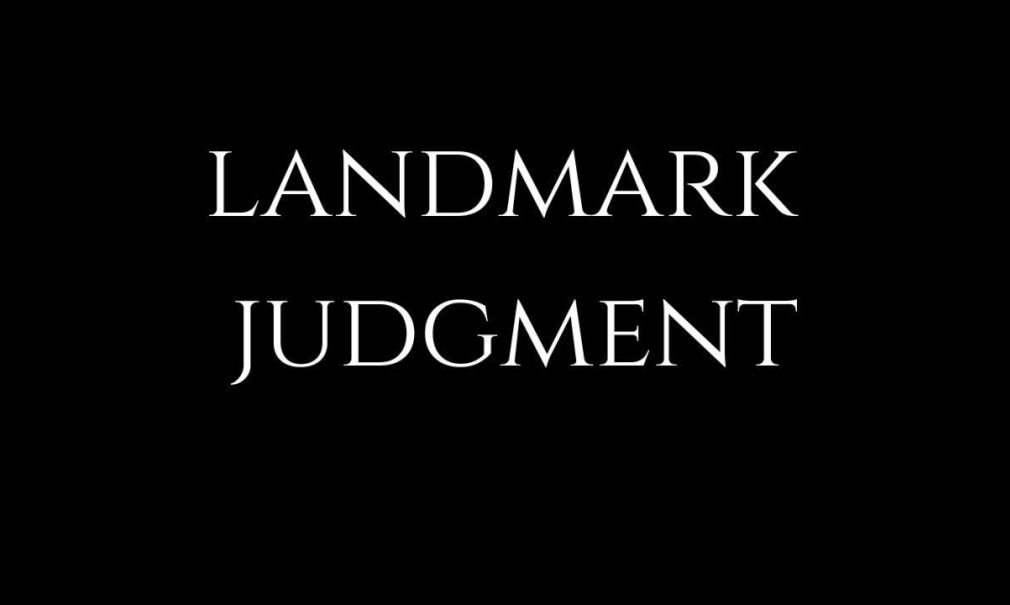Court: Bombay High Court.
Citation: (1936) 38 BOMLR 75.
Date of Judgement: 28/04/1936.
Plaintiff: Gopi Krishna Kasaundh.
Defendant: Jagoo.
Bench:
- Justice Blanesburgh.
- Justice S Lal.
- Justice G Rankin.
Statutes Referred:
- Hindu Law.
Cases Referred:
- Board, Inderun Valungypooly Taver v. Ramasawmy Pandia Talaver (1869) 13 M.I.A. 141. Ramamani Animal v. Kulanthai Natchear (1871) 14 M.I.A. 346.
Facts:
- Nikku Lal, a member of the Vaishya Caste of Gorakhpur in the United Provinces of India, died in July 1923. The deceased followed the Mitakshara School of Hindu law.
- The plaintiff was the legitimate son of Nikku Lal. The plaintiff had a right to a moiety of the deceased’s estate.
- Sri Kishan was born to a woman called Jagoo.
- Jagoo was first married to Bajinath when she was a minor. After the death of Bajinath, Jagoo married Bajinath’s younger brother Sheonath.
- Sheonath already had a wife. There were constant fights between the two wives. As a result, Sheonath abandoned the second wife, Jagoo.
- After she was abandoned, Jagoo performed the ‘sagai’ ceremony with Nikku Lal and thus entered into a matrimonial alliance with Nikku Lal.
Issue:
- Was Jagoo’s marriage to Nikku Lal valid?
The contention by Plaintiff:
- The Plaintiff claimed the entire estate on the ground that Sri Kishan, the defendant, was not a legitimate son of the deceased and therefore had no interest in the property.
- Jagoo could not contract a valid marriage with Nikku Lal while her marriage with Sheonath continued.
- As the parties to the case belonged to different sub-castes of Vaishyas- the man belonging to the Kasaundh sub-caste and the woman belonging to the Agrahari sub-caste, they could not enter into a lawful marriage with each other under the Hindu Law.
The contention by Defendant:
- The respondent put forth a custom that recognized and sanctioned the remarriage of a woman who had been abandoned by her husband.
- The defendant’s previous husband, Sheonath, had deserted and left her, and thus, her remarriage to Nikku Lal was valid.
Obiter Dicta:
- A ‘sagai’ was an informal marriage ceremony.
- Sheonath had deserted Jagoo before her marriage to Nikku Lal.
- According to the social custom applicable to the parties, a husband’s act of abandoning and deserting his wife dissolved the matrimonial tie between them. Then the wife was free to re-marry.
- The judges were not aware of any rule of Hindu Law, and such a rule was not cited, which would prohibit marriage between two individuals who belonged to different divisions of the same caste.
Judgement:
- The appeal was dismissed.
- The marriage between Jagoo and Nikku Lal was held to be valid.
Rationale:
- The lower Courts had held that ‘sagai’ was a valid ceremony in case of a remarriage.
- There had been several cases where the Court upheld a marriage between individuals from different divisions of the same caste.
Conclusion:
- The texts and treaties concerning Hindu Law did not contain any provisions or injunctions which prohibited marriage between two people from different sub-castes of the same caste. There was also no instance where the Courts had held a marriage between two people from different divisions of the same caste to be invalid.
Prepared by Mihir Poojary.

